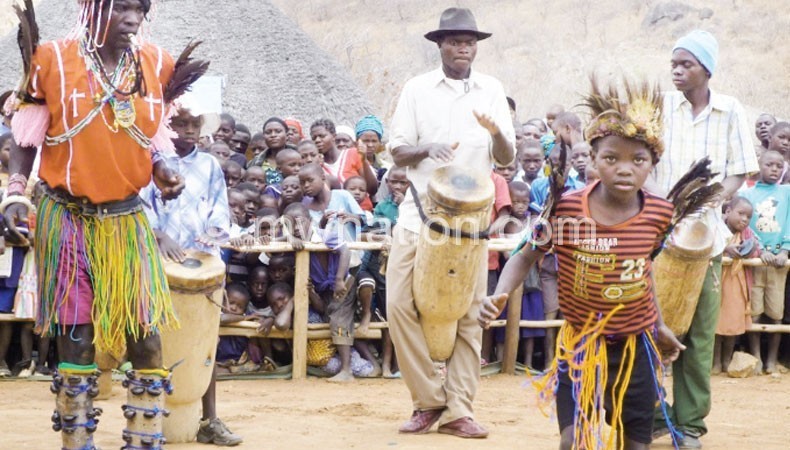Dancing vimbuza for a living

Not only is vimbuza part of the cultural fibre for people in Rumphi, it has now become a way of generating money for Ng’anga Jawo Vimbuza Dancing Group.
In the traditional setting, vimbuza is a healing dance popular among the Tumbuka people living in northern Malawi and is an important manifestation of the institution of ng’oma, a healing complex.
Ng’oma, meaning ‘drums of affliction’, carries considerable historical depth and, despite various attempts over the years to suppress it, continues to be a functional part of indigenous healthcare systems.
But sensing an opportunity to earn a living through the dance, Ng’anga Jawo Vimbuza Dancing Group perform at corporate functions to earn something from the organisers.
Members of the group explained that their lives have changed as a result of dancing at a number of events.
The group leader Osman Mumba, who champions the vimbuza dance, told Chill that they have realised several benefits from dancing at various public functions.
“Vimbuza is a unique dance in our area and people like it. Whenever we are performing, we attract large audience. We are well known in Rumphi and Mzuzu. Apart from entertaining the audience, we have also earned a living from the dance,” said Mumba.
He said, as group, they often get invited by several organisations to perform at a number of events.
“Several organisations invite us to perform at their events where we charge a hiring fee for the performance,” Mumba said after a performance at the handover ceremony of desks and iron sheets by TNM to Bumba Primary School in Rumphi last week.
During the occasion, the dance group attracted the audience’s attention with their hearty performance that had spectators giving them money in appreciation.
The group, which is comprised of eight members, hail from Zikoma Village, in T/AChikulamayembe’s area in the district.
Recalling the group’s history, the 23-year-old Mumba says he started dancing vimbuza as a 12-year-old.
“When I became sick, my mother sought several medications, which failed to heal me. It was discovered that I had vimbuza and that is when I started dancing. After a while, the vimbuza left me. However, people started coming to me and said that the dance was cultural so that is when I made a decision to dance in celebration,” he said.
Later, other members joined him, including three women who add flavour to the group’s dances.
Asked how much they charge to perform at the function, Mumba said he does not charge because people have different budgets.
According to Unesco, most vimbuza patients are women who suffer from various forms of mental illnesses.
They are treated for some week or months by renowned healers who run a tempiri, a village house where patients are accommodated.
After the concrete diagnosed has been made, patients undergo a specific healing ritual.
To this end, women and children of the village where the tempiri is located, form a circle around the patient who is slowly getting into trace and sing particular songs in which helping spirits are called.
The only men taking part are those who beat spirit drum rhythms accompanying the song and in some cases, the male healer.
The vimbuza healing ritual goes back to the mid-nineteenth century, when it developed as a means of overcoming traumatic experiences of oppression, and it further developed as a healing dance under British occupation, although it was forbidden by Christian missionaries.
By becoming possessed by vimbuza spirits, people could express these mental problems in a way that was accepted and understood by the surrounding society.
For the Tumbuka, vimbuza has artistic value and a therapeutic function that complements other forms of medical treatment.
Vimbuza is still practised in rural areas where the Tumbuku live, but it continues to face oppression by Christian churches and modern medicine.





